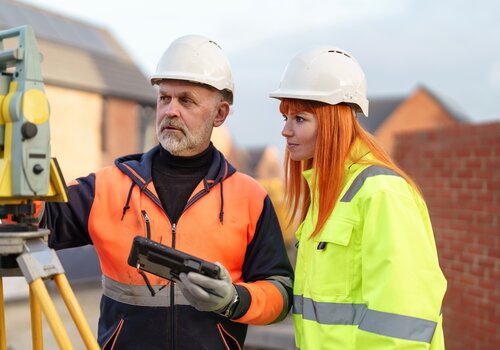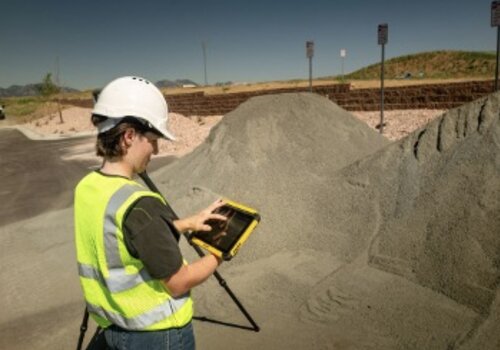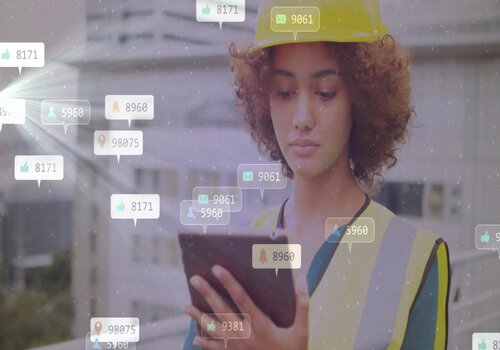As 2024 concludes, the construction industry stands at a pivotal juncture, marked by rapid technological advancements, evolving workforce dynamics and shifting economic landscapes. To navigate this complex environment and position themselves for success in the coming year, contractors must stay informed about the latest trends shaping the sector. Here are the top 5 construction industry trends from 2024 that contractors should consider as they prepare for 2025.
1. Embracing Technological Innovations
The technological landscape in construction is evolving rapidly, and contractors are dedicating more capital to integrating cutting-edge tools into their workflows. From automation and robotics to Building Information Modeling (BIM) and 3D printing to drones and augmented reality (AR), technology is reshaping how construction projects are managed, executed and maintained.
These tools enhance efficiency, improve accuracy, and reduce costs. The global construction and design software market is expected to grow by 13.3% between 2024 and 2031, underscoring the increasing reliance on technological solutions.
Additionally, social media is a powerful—and free—tool to attract the next generation to the trades. This generation grew up with technology and wants to enter an industry where they can use those skills.
2. Focus on Sustainability
Sustainability has become a central focus across all industries, and construction is no exception. Clients increasingly demand environmentally conscious building options, prompting the industry to adopt sustainable materials and recycling practices. Here are three sustainable topics to focus your efforts on in 2025:
- Innovative building materials are moving the industry forward, helping today’s construction projects achieve higher levels of sustainability, efficiency and durability.
- Whole Building Life Cycle Assessment (LCA) is a comprehensive approach that evaluates the environmental impacts of a building over its entire lifespan, from raw material extraction to demolition and disposal.
- Adoption of advanced building materials that offer unprecedented strength, flexibility and sustainability. These innovative materials not only enhance building performance but also address modern challenges such as addressing sustainability by reducing carbon emissions in construction projects.
The technological landscape in construction is evolving rapidly, and contractors are dedicating more capital to integrating cutting-edge tools into their workflows.
3. Addressing Labor Market Challenges
The construction industry continues to face significant workforce shortages, exacerbated by an aging workforce and a lack of interest among younger generations. To mitigate these challenges, companies are investing in workforce development initiatives, including partnerships with educational institutions and recruitment campaigns targeting underrepresented groups.
Second-chance hiring programs provide construction job opportunities to formerly incarcerated individuals. This initiative not only addresses labor shortages but also contributes to social equity and community development. A focus on attracting military veterans to the industry is another way to bring highly motivated and skilled workers to the trades.
Download CONEXPO-CON/AGG’s free e-book Hiring and Retaining Good Employees for actionable ways to get started today.
4. Proliferation of Megaprojects
The rise of megaprojects—landmark builds with budgets exceeding $1 billion—are shaping the U.S. in 2024. These large-scale projects are not only transforming the industry but also creating massive opportunities for contractors willing to embrace the future of manufacturing, clean energy and advanced technologies.
Projects cover sectors from aviation to sports stadiums and embrace sustainability in the construction process.
5. Prioritizing Safety
Keeping your workforce safe is your main responsibility. Let’s look back at three major changes that occurred in 2024 and how to make sure every worker feels safe in the new year.
- The move from traditional hard hats to advanced safety helmets in 2024 marks a pivotal change in how we approach head safety in construction environments. These modern helmets are not just a design overhaul; they represent a deeper understanding of head injuries and a commitment to leveraging technology for better protection. With falls in construction being the leading cause of fatalities industrywide, protecting one’s head is essential.
- A game-changing rule about respirable crystalline silica was rolled out in 2024, by the Mine Safety and Health Administration (MSHA). This new regulation is designed to better protect everyone on the job site from harmful silica dust. Learn what these changes mean for you and how they might impact your job sites.
- The importance of Personal Protective Equipment (PPE) tailored for women cannot be overstated in the traditionally male-dominated field of construction. As more women join the industry, the need for appropriate PPE is a matter not only of equality but safety.
Photo credit: NARITH_2527/ISTOCKPHOTO.COM












